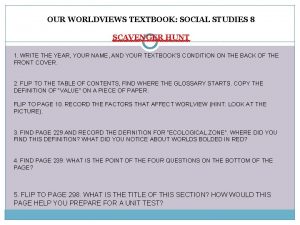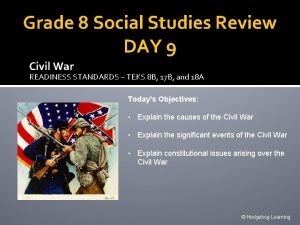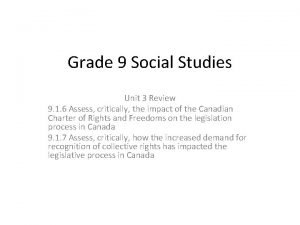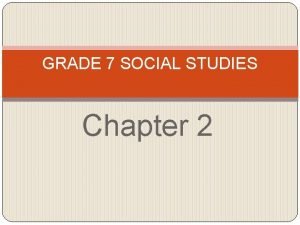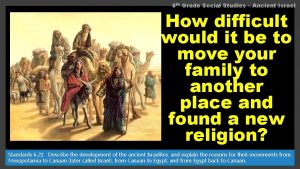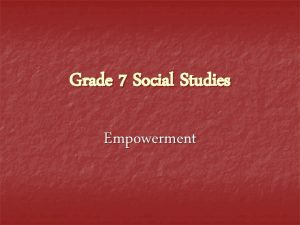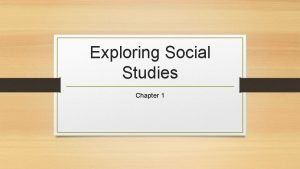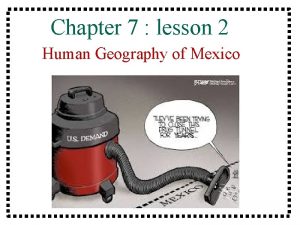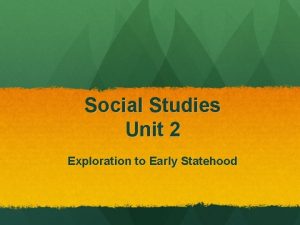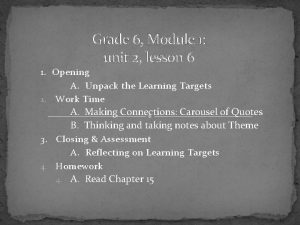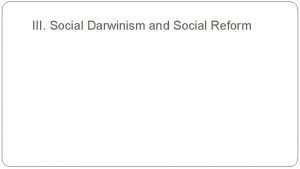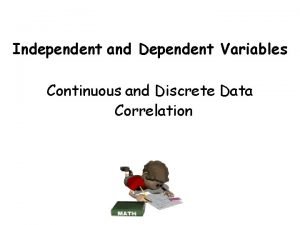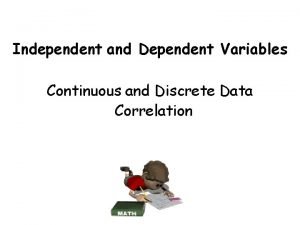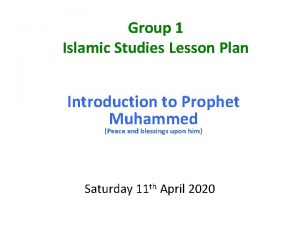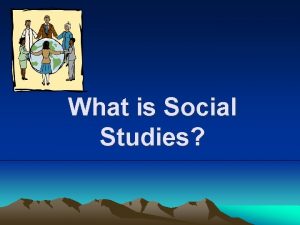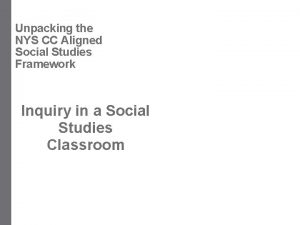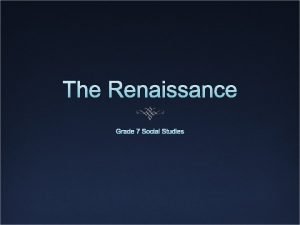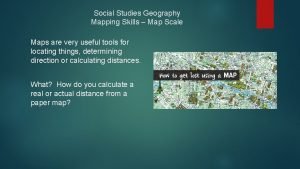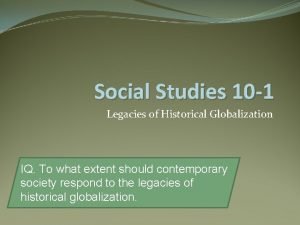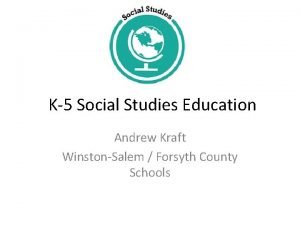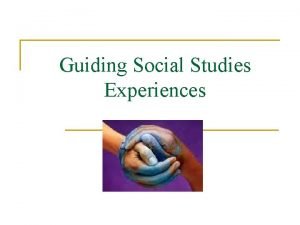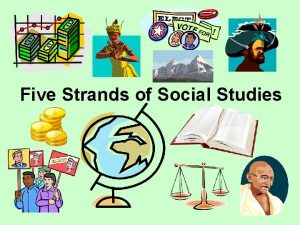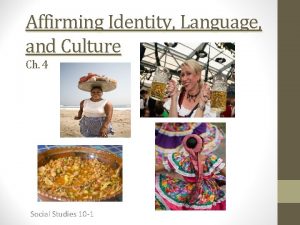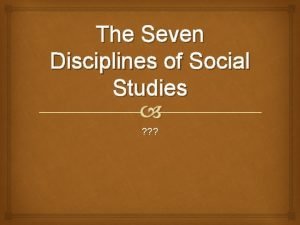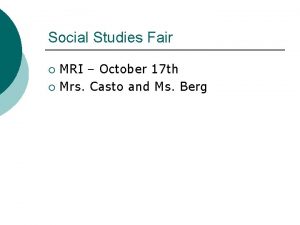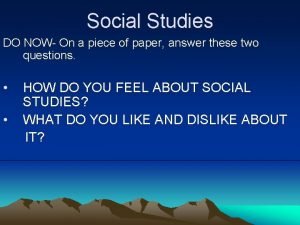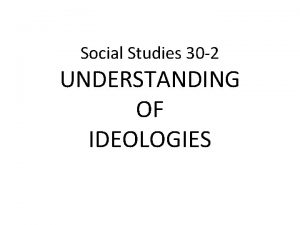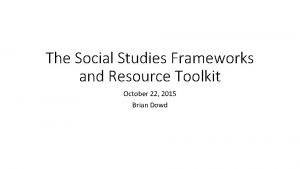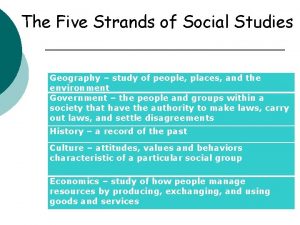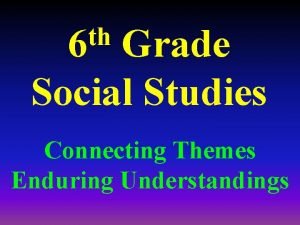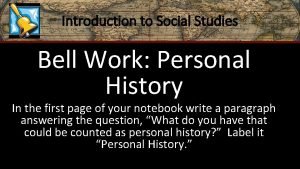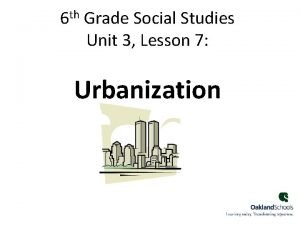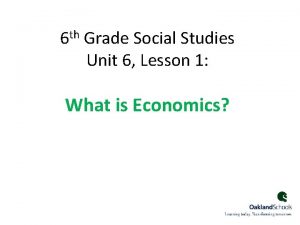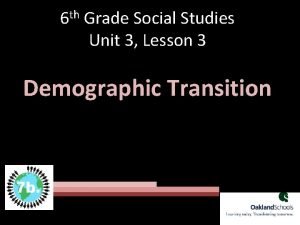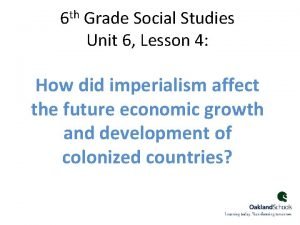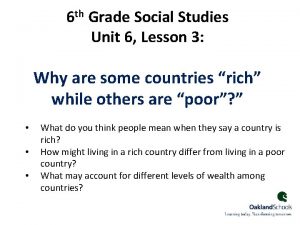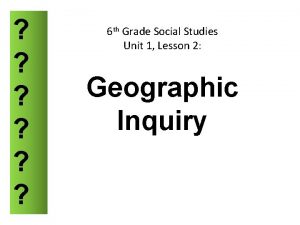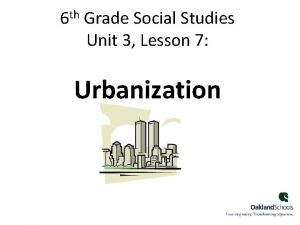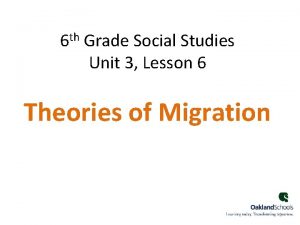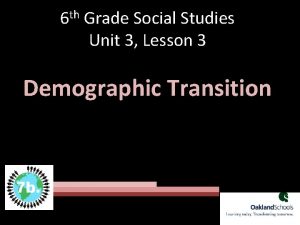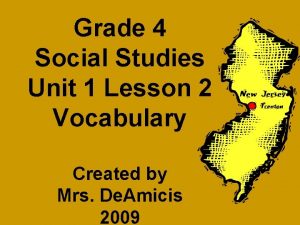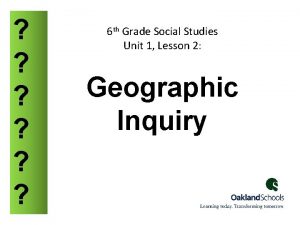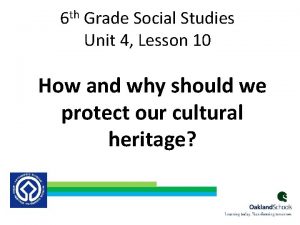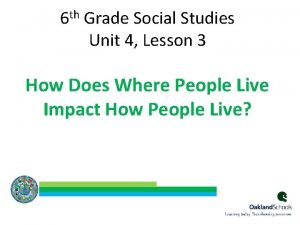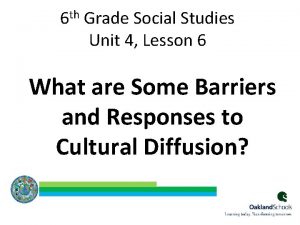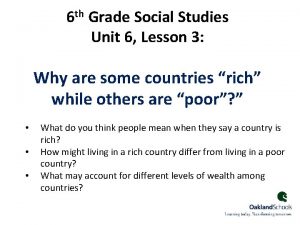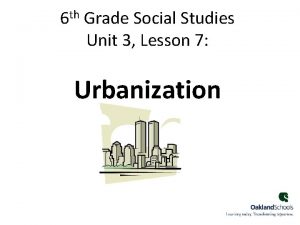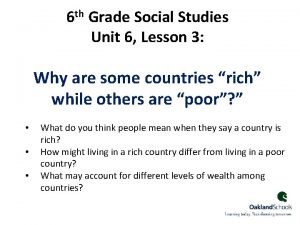th 6 Grade Social Studies Unit 4 Lesson























































- Slides: 55

th 6 Grade Social Studies Unit 4, Lesson 2 Characteristics of Culture 1

What is a metaphor? • A figure of speech • When a term or phrase is applied to something which is not literally applicable • Purpose is to suggest a resemblance • Example: – “Peter is a snake. ” – What does this metaphor mean? 2

Metaphors for Culture 3

Metaphor #1 4

Clothing 5

Clothing Language 6

Clothing Language Food 7

Clothing Language Food Beliefs 8

Clothing Language Food Beliefs Attitudes 9

Clothing Language Food Beliefs Attitudes Values 10

Metaphor #2 11

Metaphor #2 12

Metaphor #2 13

What you can see, hear and touch Metaphor #2 Artifacts Rituals 14

What you can see, hear and touch Metaphor #2 Artifacts Rituals 15

Metaphor #2 Artifacts Systems Institutions Rituals 16

Metaphor #2 Artifacts Systems Institutions Rituals 17

Metaphor #2 Artifacts Systems Beliefs Attitudes Institutions Rituals 18

Metaphor #2 Government should have limited power Artifacts Systems Beliefs Attitudes Institutions Rituals 19

Metaphor #2 Artifacts Systems Beliefs Values Attitudes Institutions Rituals 20

Metaphor #2 FREEDOM Artifacts Systems Beliefs Values Attitudes Institutions Rituals 21

ACTIVITY Artifacts Systems Beliefs Values Complete your own cultural onion for American culture. Attitudes Institutions Rituals 22

Which metaphor do you think is best? Why? 23

ACTIVITY Come up with a new metaphor for culture. 24

ACTIVITY Analyzing new clues for the Mystery Culture 25

Characteristics of Culture 26

Culture is shared. 27

Culture is shared. • Culture is shared by members of a group. 28

Culture is shared. • Culture is shared by members of a group. • Each of us is unique and capable of individual thoughts, and behaviors but we do not each have our own individual culture. 29

Culture is learned. 30

Culture is learned. • Culture is learned not inherited. 31

Culture is learned. • Culture is learned not inherited. • Culture is passed down from one generation to another. 32

Culture is dynamic. 33

Culture is dynamic. • Cultures change. 34

Culture is dynamic. • Cultures change. • New cultural traits are added and some old ones are lost. 35

Culture is dynamic. • Cultures change. • New cultural traits are added and some old ones are lost. • Change happens as a result of both invention within a society and diffusion of cultural traits from one society to another. 36

Culture is dynamic. 37

Culture is adaptive. 38

Culture is adaptive. • People have been able to adapt to a wide variety of geographic regions. 39

Culture is adaptive. • People have been able to adapt to a wide variety of geographic regions. • People have been able to adapt in times of conflict and environmental disasters. 40

Culture is adaptive. 41

Culture is integrated. 42

Culture is integrated. • Relationships exist between the different cultural components of a culture. 43

Culture is integrated. • Relationships exist between the different cultural components of a culture. • Each aspect of a culture tends to be in harmony with every other aspect. 44

Culture is integrated. • While horse is strong travel to see places. • You can’t put two saddles on the same horse. • It is easier to catch an escaped horse than to take back an escaped word. 45

Culture is elastic. 46

Culture is elastic. • Even though people belong to a certain culture, there is variety in how they reflect the cultural components of that culture. 47

Culture is elastic. • Even though people belong to a certain culture, there is variety in how they reflect the cultural components of that culture. • People can stretch cultural components to fit their own unique personality. 48

Culture is… 49

Culture is… 50

Culture is… 51

Culture is… 52

Culture is… 53

Culture is… 54

Property of Oakland Schools Author: Carol Egbo Editor: Amy Bloom 55
 Living together social studies grade 6
Living together social studies grade 6 Moral social and cultural studies grade 9
Moral social and cultural studies grade 9 What are some examples of worldview
What are some examples of worldview Day 9 grade 8 social studies staar review
Day 9 grade 8 social studies staar review Social 9 chapter 3 test
Social 9 chapter 3 test Social studies chapter 2
Social studies chapter 2 Nsms 6th grade social studies.weebly
Nsms 6th grade social studies.weebly Grade 7 social studies empowerment
Grade 7 social studies empowerment 8th grade social studies
8th grade social studies 4th grade social studies vocabulary
4th grade social studies vocabulary Exploring social studies lesson 1 thinking like a historian
Exploring social studies lesson 1 thinking like a historian What influenced mexico’s political and social structures?
What influenced mexico’s political and social structures? Social studies unit 2 test answers
Social studies unit 2 test answers Paradigm shift from women studies to gender studies
Paradigm shift from women studies to gender studies Grade 6, module 1: unit 2 answer key
Grade 6, module 1: unit 2 answer key What was reform darwinism
What was reform darwinism Social thinking adalah
Social thinking adalah Social thinking social influence social relations
Social thinking social influence social relations Unit 4 lesson 7 right triangles and trigonometry unit test
Unit 4 lesson 7 right triangles and trigonometry unit test 4th grade va studies sol
4th grade va studies sol A student's grade depends on how much she studies
A student's grade depends on how much she studies Discrete variables
Discrete variables He studies english
He studies english Business studies grade 11 2020 term 2 sba task presentation
Business studies grade 11 2020 term 2 sba task presentation A student's grade depends on how much she studies
A student's grade depends on how much she studies Unit 10, unit 10 review tests, unit 10 general test
Unit 10, unit 10 review tests, unit 10 general test Islamic studies lesson plan samples
Islamic studies lesson plan samples Social studies alphabet
Social studies alphabet What is rights in social studies
What is rights in social studies Nys standards social studies
Nys standards social studies Renaissance definition social studies
Renaissance definition social studies Social studies notebook cover
Social studies notebook cover Map formula
Map formula Grand exchange social studies
Grand exchange social studies Pkn sebagai pendidikan disiplin ilmu
Pkn sebagai pendidikan disiplin ilmu Pegs factors
Pegs factors Nys social studies toolkit
Nys social studies toolkit Kas standards
Kas standards Winston salem forsyth county schools social studies
Winston salem forsyth county schools social studies Importance of social science
Importance of social science Brain wrinkles answer key
Brain wrinkles answer key Strands of social studies
Strands of social studies Social studies essay format
Social studies essay format Affirmation of identity social studies
Affirmation of identity social studies What are the 7 disciplines of social science
What are the 7 disciplines of social science Social studies terminology
Social studies terminology Wv social studies fair abstract
Wv social studies fair abstract Social studies do now questions
Social studies do now questions Social studies 30-2 textbook
Social studies 30-2 textbook Glce social studies
Glce social studies Business economics and social studies
Business economics and social studies Nycdoe social studies scope and sequence
Nycdoe social studies scope and sequence Social studies frameworks
Social studies frameworks 5 strands of social studies examples
5 strands of social studies examples 8 themes of social studies
8 themes of social studies Social studies bellwork
Social studies bellwork


